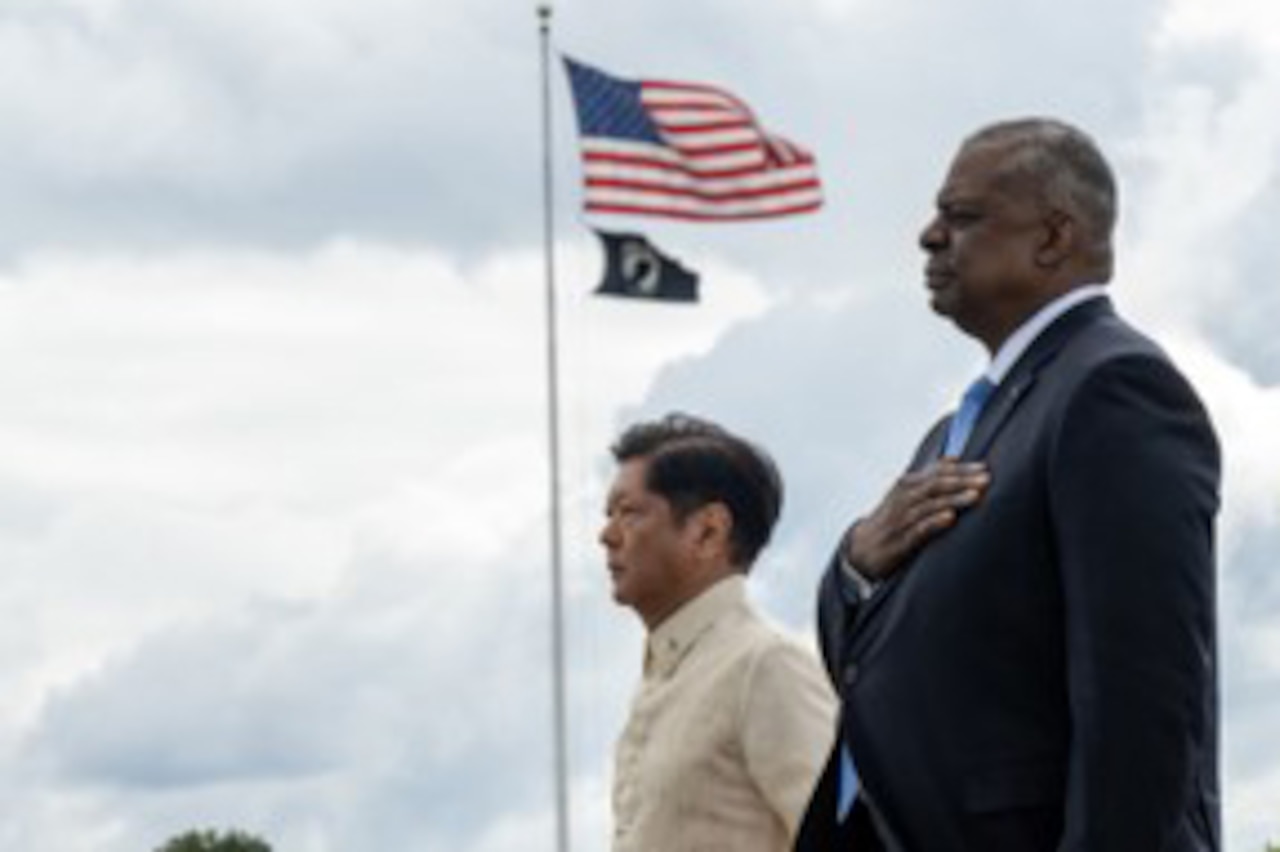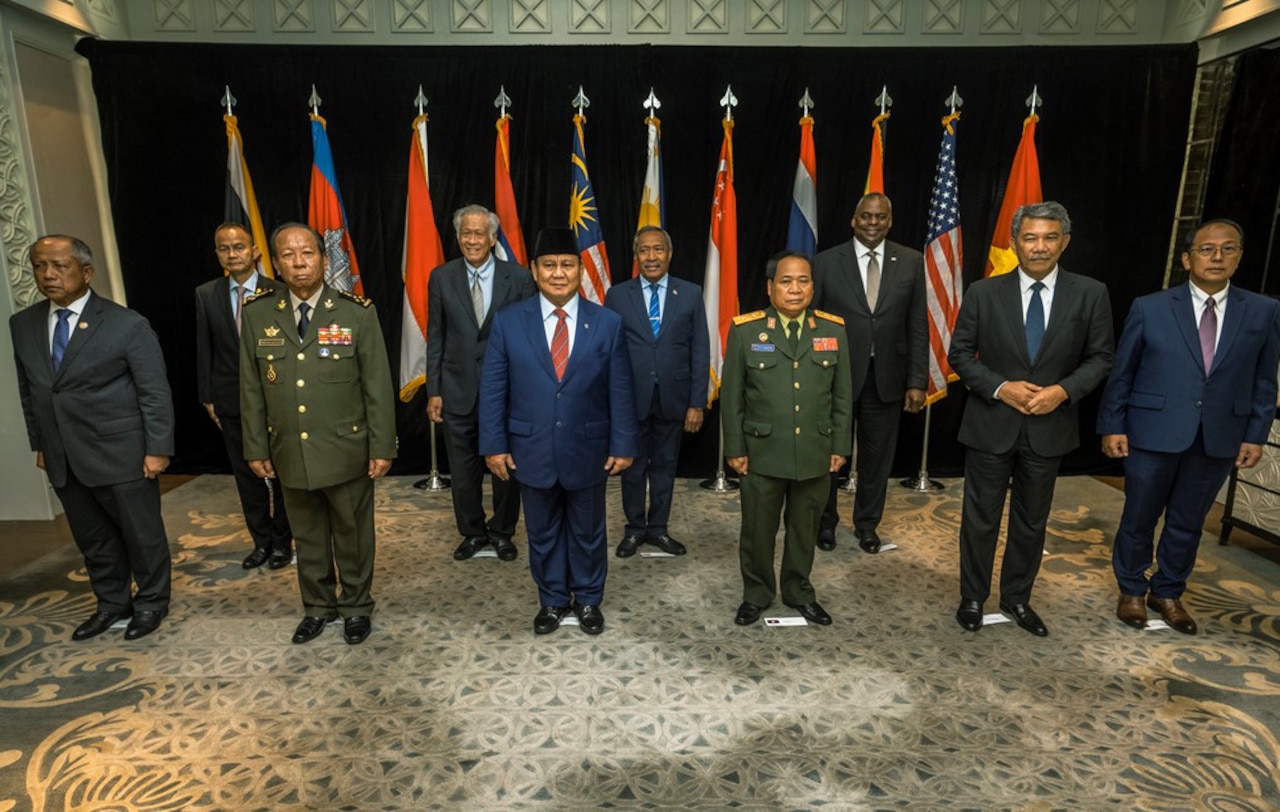In the two years since the Biden-Harris Administration released the Indo-Pacific Strategy of the United States, the Department of Defense (DoD) has done more than ever alongside allies and partners to advance a shared vision for a free and open region. "Indo-Pacific nations are helping to define the very nature of the international order, and U.S. allies and partners around the world have a stake in its outcomes," the strategy states. "Our approach, therefore, draws from and aligns with those of our closest friends." Under the leadership of President Biden and Secretary Austin, the Department continues to support America's IndoPacific allies and partners as they invest in their own defense and security, in their relationships with each other, and in their relationships with the United States.
HIGHLIGHTS
ADVANCING DEFENSE DELIVERABLES FROM THE CAMP DAVID SUMMIT
During the Camp David Summit, President Biden, Prime Minister Kishida, and President Yoon committed to deepening trilateral defense cooperation between the United States, Japan, and the Republic of Korea (ROK). In December 2023, the Department delivered on this commitment by approving a multi-year, trilateral exercise plan and fully activating a real-time DPRK missile warning data-sharing mechanism.

Biden Meetings
STRENGTHENING REGIONAL MARITIME DOMAIN AWARENESS
Together, the United States, Australia, India, and Japan – the Quad partners – are delivering greater maritime transparency through the Indo-Pacific Partnership for Maritime Domain Awareness (IPMDA) by enhancing partners' abilities to monitor their waters.
DEEPENING THE MAJOR DEFENSE PARTNERSHIP WITH INDIA
The United States and India are accelerating integration between both countries' defense industrial sectors, and the United States is bolstering India's defense modernization, including by coproducing fighter jet engines and armored vehicles.
ADVANCING THE U.S.-AUSTRALIA ALLIANCE
The Unbreakable Alliance between the United States and Australia is stronger than ever and delivering on a number of key force posture initiatives, including increased rotations of U.S. bombers and fighters and U.S. Army watercraft, expanded maritime and ground forces cooperation, enhanced space and logistics cooperation, and continuing upgrades of key bases.
DELIVERING FOR THE U.S.-PHILIPPINES ALLIANCE
The United States and Philippines are making significant strides to increase their interoperability, accelerate capability development, and invest in shared infrastructure – including at four new Enhanced Defense Cooperation Agreement (EDCA) sites and through over $100 million in upgrades to existing EDCA sites.

Rendering Honors
MODERNIZING THE U.S.-JAPAN ALLIANCE
The U.S.-Japan Alliance remains the cornerstone of peace and stability in the Indo-Pacific and efforts in the past two years have focused on increasing alliance coordination, enhancing the capability of the alliance to deter and, if necessary, respond to threats, and optimizing U.S. force posture in Japan based on improved operational concepts and new capabilities.
STRENGTHENING DETERRENCE WITH THE REPUBLIC OF KOREA
The United States and Republic of Korea are deepening defense cooperation to bolster deterrence against the DPRK threat and address other challenges in the region, including the creation of new bilateral dialogue mechanisms and by increasing strategic asset rotations to the Korean Peninsula.
SUPPORTING ASEAN CENTRALITY
The United States is engaging with the Association of Southeast Asian Nations (ASEAN) more deeply than ever, including through DoD-led capacity-building programs and training courses like the Emerging Leaders Fellowship Program, which provides support, mentorship, and professional development to young civilian and defense leaders from ASEAN countries.

Shangri-La Meeting
ADVANCING TRILATERAL COLLABORATION THROUGH AUKUS
AUKUS is supporting Australia's acquisition of a conventionally-armed, nuclear-powered submarine capability, delivering cutting-edge military capabilities, removing barriers to cooperation, improve interoperability, and building a trilateral innovation ecosystem between Australia, the United Kingdom, and the United States.
OPERATING TOGETHER ACROSS THE INDO-PACIFIC
The United States is participating in combined operations with regional allies and partners that have enhanced interoperability across multiple domains, boosted deterrence, and increased in scape, scope, and complexity, including: Exercise BALIKATAN with the Philippines; Exercise SUPER GARUDA SHIELD with Indonesia and over ten nations represented; Exercise PACIFIC VANGUARD with the ROK, Japan, and Australia; and Exercise COBRA GOLD, co-sponsored with Thailand.






